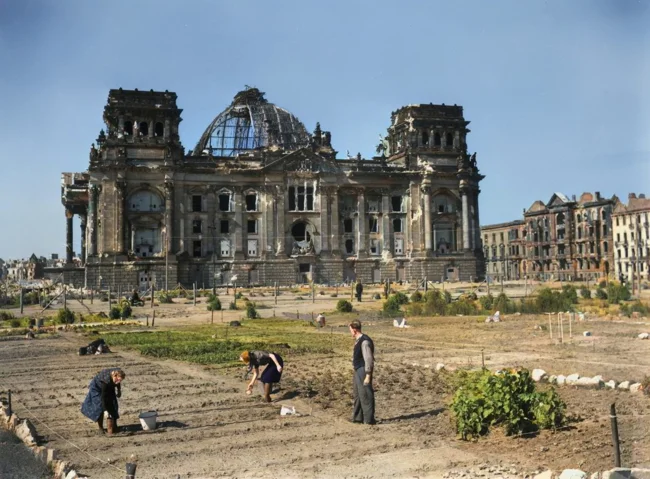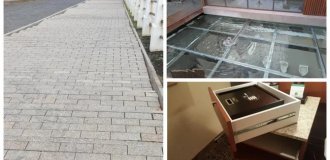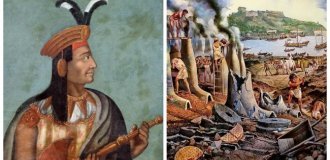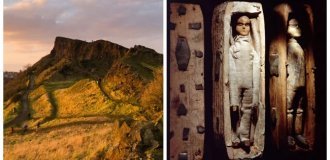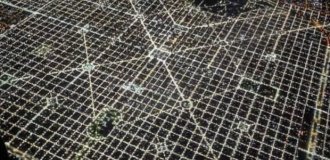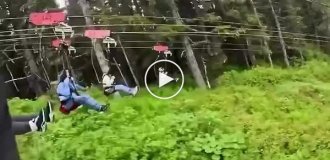Rare and interesting photos from the fronts of World War II (21 photos)
The selection includes photographs from different fronts and different coalitions. War photos captured not only large-scale military operations, but also the everyday life of people in war conditions. These shots are important documentary evidence of one of the most significant pages in human history. 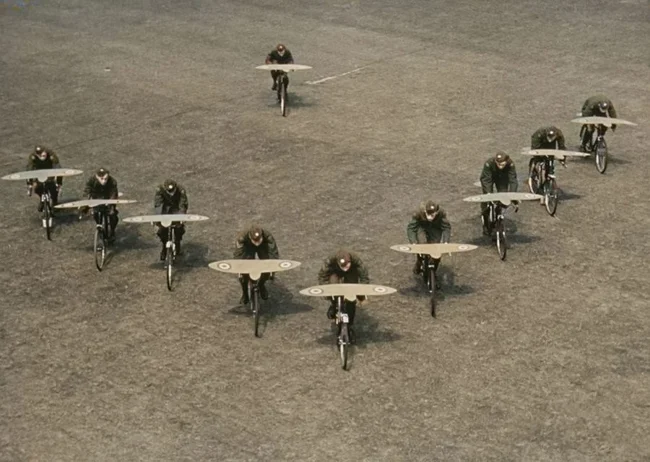
American officers Lieutenant Colonel Ben Thompson and Virgil Happy with bundles of money in the Magdeburg bank vault, where Reichsmarks worth $280 million were found, 1945.
After the fall of the Third Reich, this money immediately turned into "candy wrappers". Their value is zero (or at least as souvenirs). 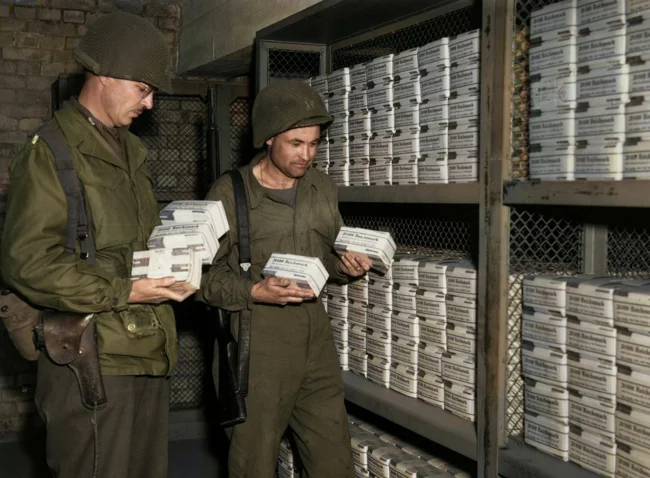
Children from the Lodz Ghetto are transported to the Chelm nad Nerem death camp (renamed Kulmhof), 1942.
In August 1942, the Nazis began a large-scale deportation of the Lodz Ghetto to the Chelmno camp. Particular attention was paid to children, the elderly, and other groups who were unable to work. The decision to deport children was made ruthlessly, as they were considered an "unproductive population".
After the victims arrived, they were immediately sent to the gas chambers. Their belongings were confiscated and the people themselves were killed.
Historians estimate that between August and September 1942 alone, more than 15,000 children from the Lodz Ghetto were deported and killed in Chelmno. 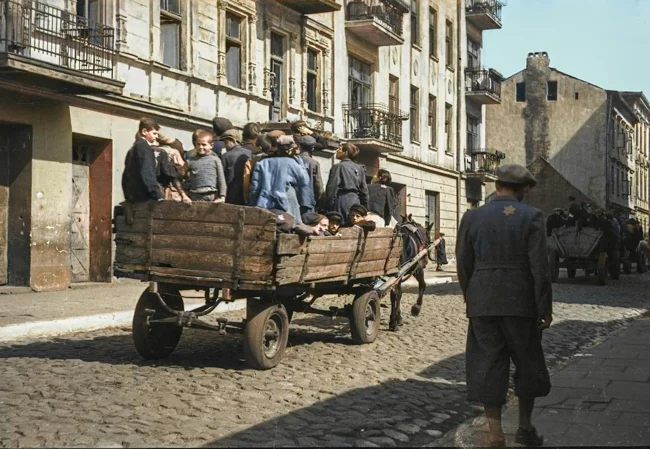
Photographer: Henryk Ross
North Africa, 1943.
In 1943, General Rommel (the desert fox) had already been recalled to Germany. And the Italian-German force capitulated. 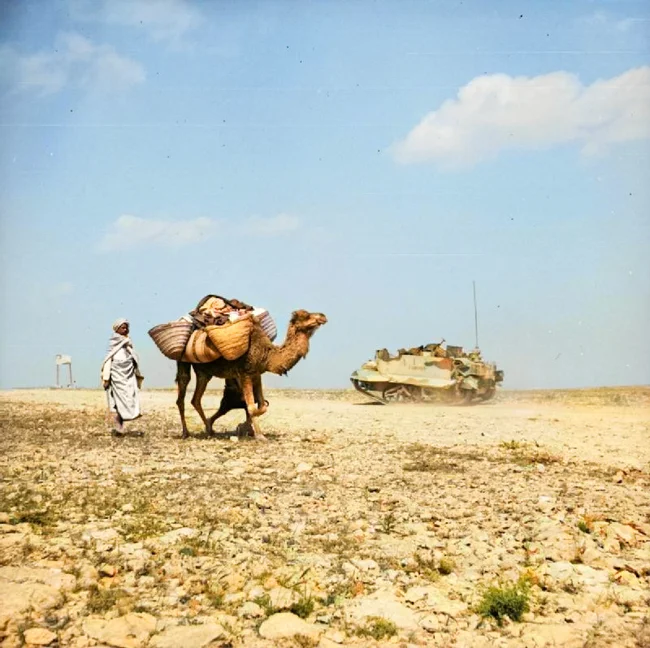
Minoru Wada directs American aircraft to attack Japanese Army headquarters. Philippines, 1945.
Minoru Wada was a Japanese-educated Kibei (American-born Japanese) who served as a junior officer in the Imperial Japanese Army and was captured on Mindanao by the U.S. Army in 1945. He provided vital intelligence to Marine bomber crews and led the aircraft in a highly successful attack on the Japanese 100th Division headquarters. He was motivated by a desire to minimize the loss of life by helping to bring the war in the Pacific to a quick end. 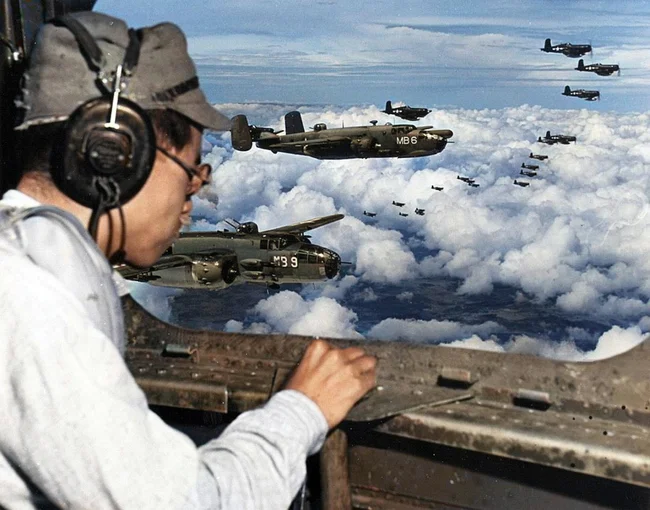
One of the warehouses, filled to the ceiling with victims' shoes. Auschwitz, Poland, 1944.
Auschwitz was the largest Nazi death camp, where about 1.1 million people, most of them Jews, were killed between 1940 and 1945. The camp also housed Poles, Roma, and Soviet prisoners of war.
Thousands of pairs of shoes left behind by victims of the Nazi death camp are now kept at the Auschwitz-Birkenau Museum. 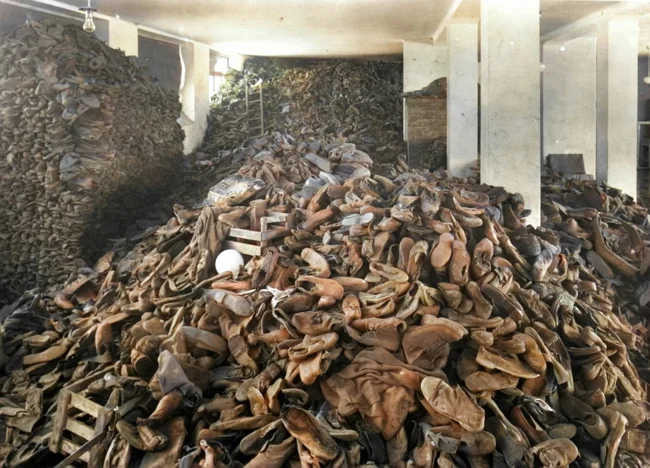
A farmstead in the Louvre garden during World War II. Paris, September 1943.
After France was occupied by German troops in 1940, the country faced serious food supply problems. The blockade, restrictions, and lack of sufficient supplies from other regions led to serious food shortages. To cope with this crisis, the French began to use any available land to grow food.
I also posted similar photos from the siege of Leningrad. 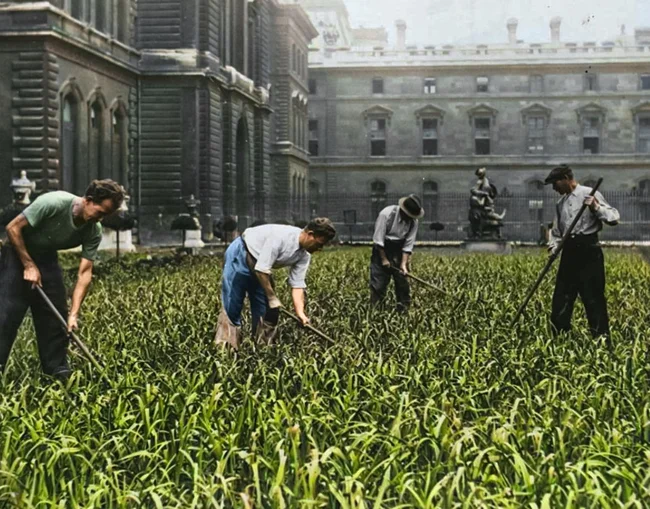
A Luftwaffe non-commissioned officer poses with a bottle while sitting on the head of a bust of I.V. Stalin, 1940s. 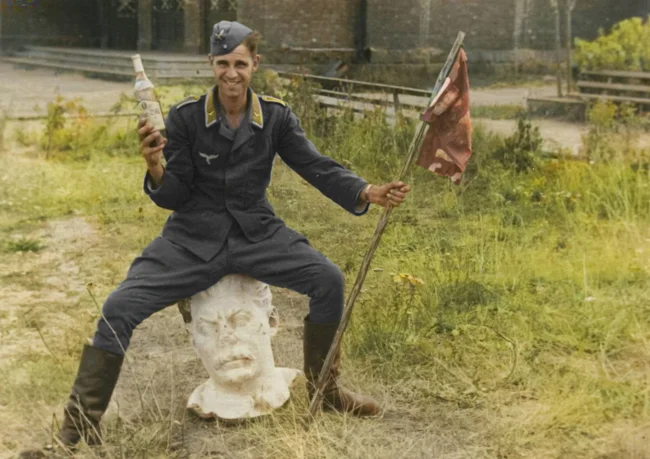
English signalmen during technical work on the communication line. Assam area, India, 1944 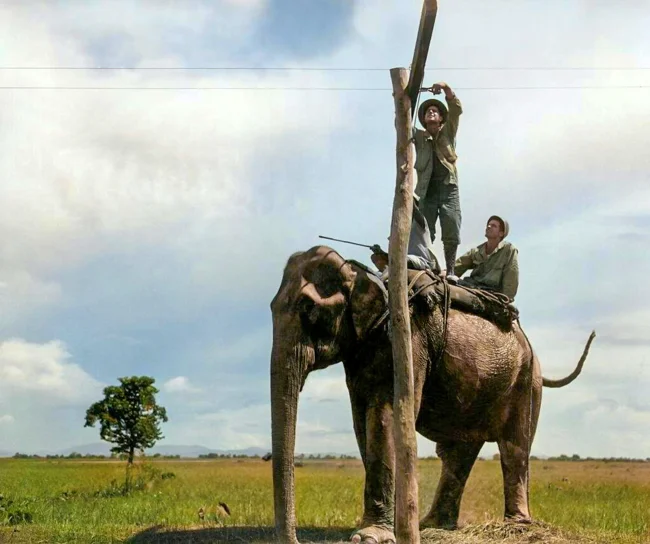
Italian soldiers in ambush. Tunisia, 1943.
Tunisia has a difficult terrain, including mountains and gorges, which made it an ideal place for ambushes. Italian soldiers (allies of Nazi Germany) often camouflaged themselves among rocks or in bushes to suddenly attack Allied advance units. 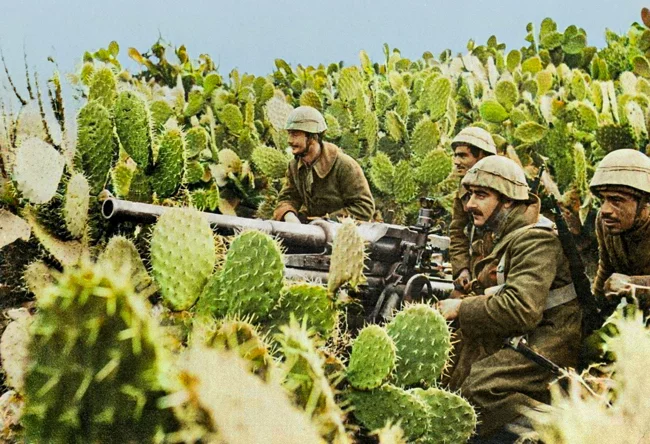
Dutch children play near American M107 155mm high-explosive howitzer shells on a city street.
Most likely, the photo captures some of the rear moments of Operation Cobra - the land component of the Allied landing in Normandy. When, due to the already formed German line of defense, Omar Bradley faced the task of breaking through the front and withdrawing troops from the occupied bridgehead to operational space. And for this, the 155th caliber is the best.
The shells are in transport condition (the fuse is unscrewed. Even if you hit it with a hammer or shoot it, it will not detonate). Although civilians nearby - this is not right. 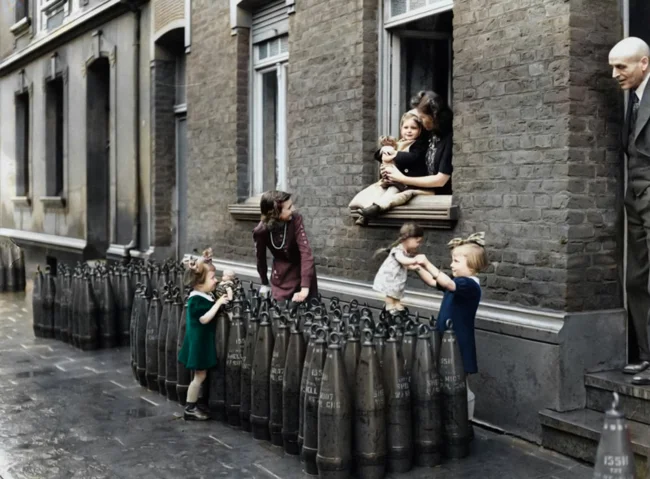
A Belgian refugee family of four rides a tandem bicycle to the relative safety of France after the Germans invaded their country. May, 1940.
In May 1940, as Germany began its invasion of Belgium, the Netherlands and France, millions of people became refugees trying to escape the advancing German troops. One of the most touching and symbolic examples of this mass evacuation is the story of a Belgian family who decided to use a tandem bicycle - a two-seater bicycle - as a means of transportation to travel to the relative safety of France. 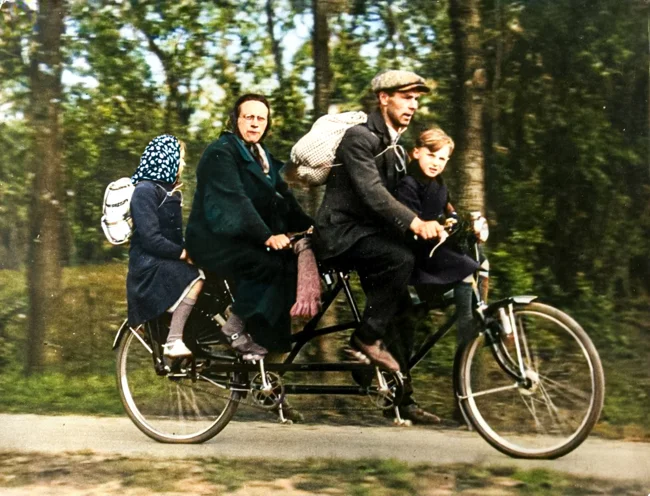
British children and an American soldier watch a practice landing of American troops from landing craft on Blackpool Sands beach. UK, 1944.
By the summer of 1944, the Allied forces were preparing to invade Europe to liberate the occupied territories from Nazi Germany. The Normandy landings were chosen as a key stage of the campaign, as this region was strategically important for establishing a bridgehead on the continent.
Successful execution of such a large-scale operation required thorough preparation. The training was aimed at practicing all aspects of the landing: from the coordination of troops to the use of equipment and vehicles. 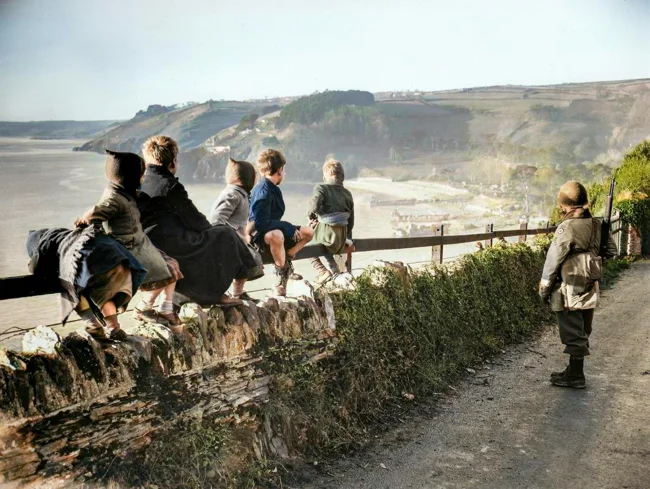
A mechariste from Benito Mussolini's desert army and his camel in a Libyan oasis, 1940. Since the Italian colony in Libya consisted mainly of desert, Mussolini decided to create a desert army, which would consist of members of loyal local tribes. Military stations were built in Nalut, Ghat, Derg and other desert places to suppress local uprisings and combat foreign invasions. 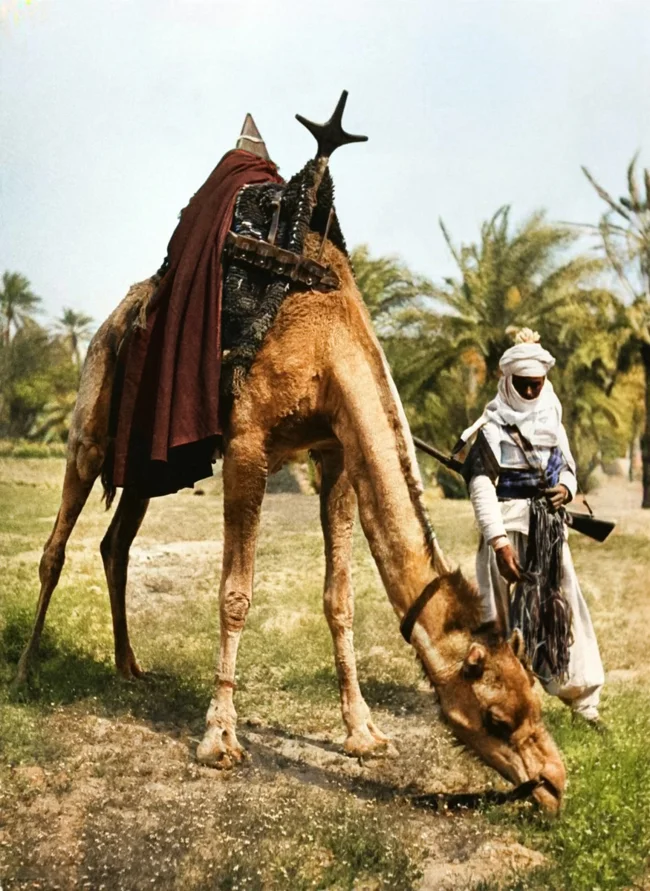
Margaret Bourke-White with the U.S. 8th Air Force, 1943.
A distinguished American photojournalist whose career spanned key events of the 20th century. She was the first female photographer to work in war zones, the first American journalist to gain access to the Soviet Union, and the author of numerous photographs that captured historic moments.
Some of Bourke-White's most stunning and tragic photographs were taken after the liberation of the Buchenwald concentration camp in 1945. These images became an important testimony to the horrors of the Holocaust and helped the world better understand the scale of the tragedy.
Her quote: "Photography is a weapon against ignorance, lies, and tyranny." 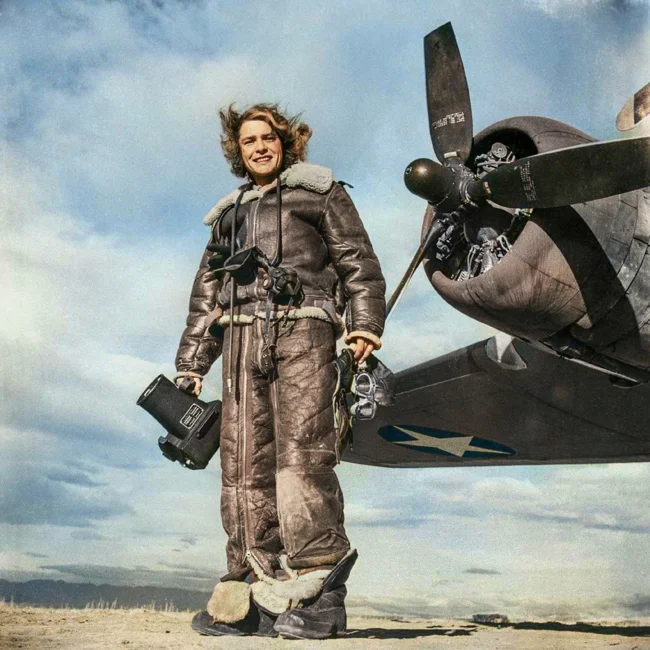
Soldiers of the 165th Infantry Regiment, 27th Infantry Division, U.S. Army, look at a wrecked Japanese Kawanishi H8K2 flying boat on Butaritari Island, Makin Atoll. The atoll was home to a Japanese seaplane base, 1943. 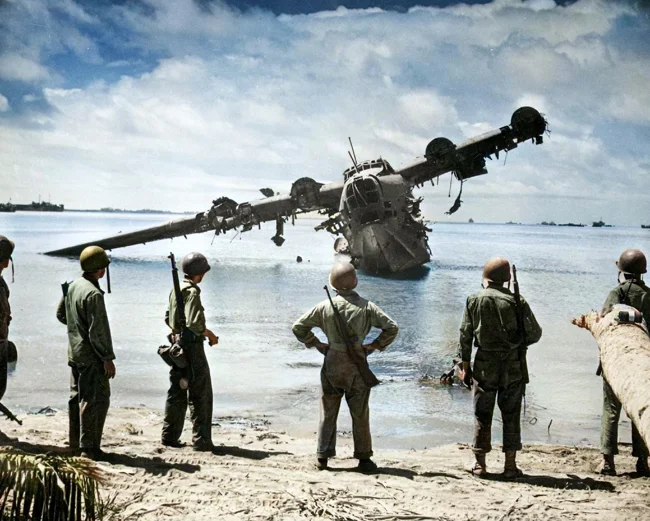
Tree camp. Royal Australian Engineers Sapper A. F. Hobbs from Queensland and Sapper W. H. Gouldom from Sydney shave with axes. England, 1941. 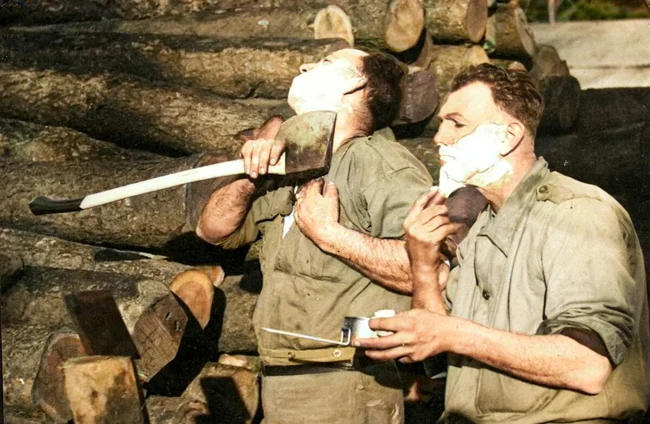
The dome of St. Paul's Cathedral in clouds of smoke after German bombing. London, 1940.
Designed by the famous architect Christopher Wren and completed in 1710, St Paul's Cathedral is one of London's most significant symbols. During the Blitz, the cathedral was located in the heart of the city, in an area that was heavily bombed.
Despite the fact that surrounding buildings often burned and collapsed, the cathedral miraculously survived. This photograph shows the dome of the cathedral rising above the smoke clouds from the fires caused by the bombing. This picture was taken during one of the most devastating raids - December 29, 1940, when German planes dropped thousands of incendiary bombs, causing massive fires in central London. 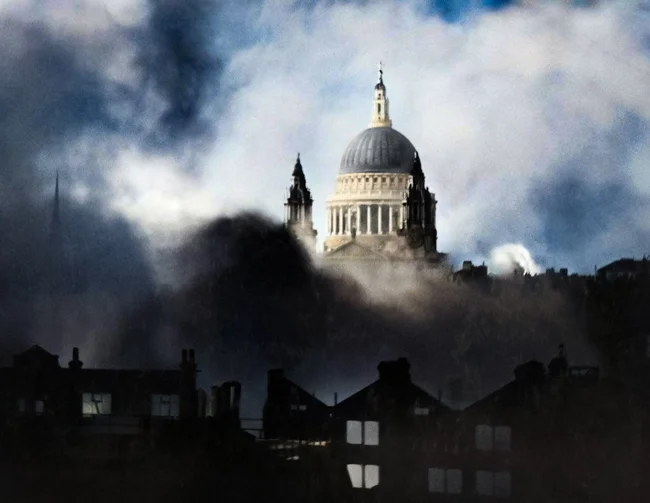
A young Luftwaffe non-commissioned officer captured by the Americans, spring 1945.
The photograph of a 16-year-old anti-aircraft gunner from the Hitler Youth is one of the most touching and tragic images of the last days of World War II. It symbolizes both the ideological mobilization of the youth of Nazi Germany and the hopelessness of the situation in the Third Reich in April-May 1945. 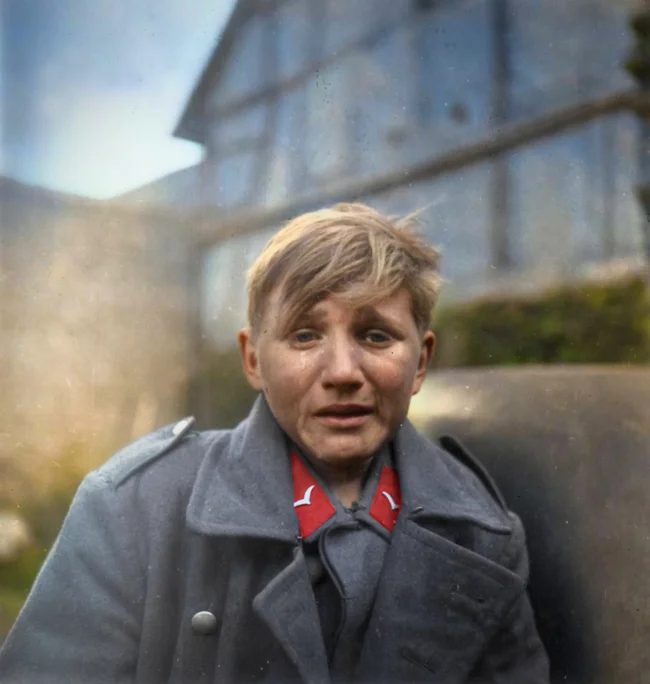
Cadets learning the art of formation flying - on bicycles. Great Britain, 1942. 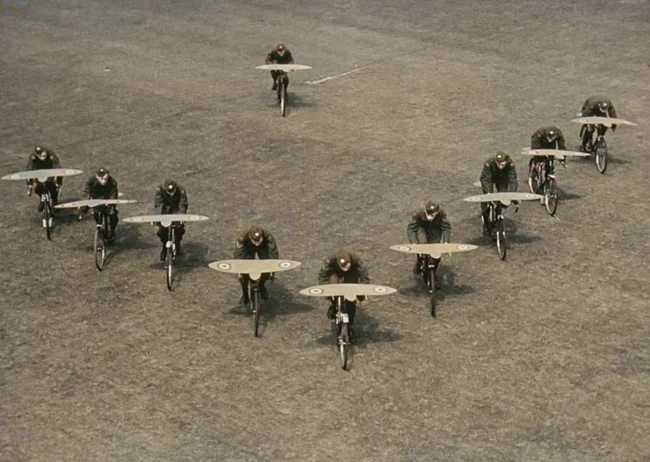
Photographer: Kurt Hutton
Germans plant vegetables in front of the Reichstag building, 1946.
After the devastation of World War II, the country faced a massive crisis: destroyed infrastructure, food shortages, and the need to rebuild everyday life. Now vegetable gardens have begun to appear in German cities. 